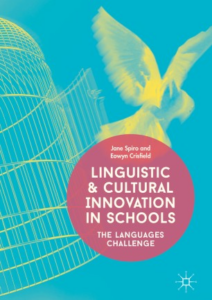Eowyn Crisfield, specialist in languages across the curriculum, including EAL, home languages, bilingual and immersion education, takes a look at how school leaders can address the linguistic diversity in their school.
One of the most challenging areas in international education is languages. While we can find and use curricula for any other area of learning from national and international options, the unique situation of languages and language learners in international schools means there are no ‘one size fits all’ solution, and therefore no ‘one size fits all’ curriculum. The three language areas that are affected are English as an Additional Language (EAL), home languages, and host country languages. For all of these language areas, understanding student development and developing responsive programmes requires understanding how languages interact and influence each other, and having accurate data about language development across a student’s language profile.
English as Additional Language as a category and programme is not unique to international schools, but the development, implementation, and tracking of an EAL programme needs to be created based on the school profile (curriculum, students, language profiles). There is a draw towards using English Language Teaching (ELT/EFL) materials and assessment, but these are not a good fit for students learning through English, and will not provide the type of language development they need, or any reasonable data on how their level of English corresponds with access to the curriculum. There are fit for purpose tracking systems (Bell Assessment Framework and WIDA, for example) but these do not have accompanying curricula and materials, as they need to be aligned with the school curriculum and not stand-alone.
The profile of home languages is increasing in international schools, in part based on better understanding of the nature of bi/multilingual development, and also, one would hope, as a key area of development for diversity, equity, and inclusion approaches. There is a unique link between the development of a child’s home language and their progress in the development of English through school, which has been attested through decades of research in different contexts. Given this, it is always in the best interests of the child (and school) to promote continued development of both language and literacy in the home language/s. This strong link also means that when we are concerned about school language development, understanding development in the home/dominant language is key to differentiating between a potential language delay/SEN or just the effect of language acquisition.
For schools with a linguistically homogenous population, the benefits of promoting equal development in the home and school language can be addressed by moving from an English-only model to a bilingual model. For schools with a linguistically diverse population, a creative approach to supporting home languages is needed, whether that be through a combination of extra-curricular and in-school offerings, or through the development of multilingual approaches in the classroom (translanguaging). In either case, each school will need to develop a bespoke model, curriculum, and tracking system to best support and understand student development in the home language/s.
The final area of language teaching and learning that needs attention is the host country language. Many schools are obliged to teach the host country language, and most would do so by choice anyway. In some cases there is a curriculum available that fits the school’s needs, but in most cases development will again need to be in-house. The three areas that make host country language curriculum development challenging are: varying proficiency levels; incoming students at different times in the year/cycle; varying parental aspirations for the host country language. It is entirely normal for a school to need to provide tuition for the host country language for every level from beginner to fluent, for students arriving in Year 1 and in Year 7, and for students who are on a short stay (2-3 years) and students whose families have recently settled in the country permanently. With all this variation in proficiency and perspectives on learning the language, there is again no ready-made curriculum that will serve the needs of this wide variety of students and families.
It becomes clear, therefore, that languages is an area where schools will need to invest time and effort, first carrying out a clear audit of the school population in terms of languages, and then to carry out a subsequent audit of provisions. The gaps between the need and current provision will give the school a road map to follow, as they turn to the task of building an in-house programme for EAL, home languages, and host country language that will be the ‘best fit’ for their students and families. It’s no small task, but if we recognise that languages and language development are central to the social, cultural, linguistic, and academic development of our students, then surely we have no other choice!
Join the upcoming webinar with Eowyn and Learning Ladders CEO, Matt here
Bio:
Eowyn Crisfield is a Canadian-educated specialist in languages across the curriculum, including EAL, home languages, bilingual and immersion education, super-diverse schools and translanguaging. Her focus is on equal access to learning and language development for all students and on enhancing approaches to linguistic diversity in schools. She is author of the recent book ‘Bilingual Families: A practical language planning guide (2021) and co-author of “Linguistic and Cultural Innovation in Schools: The Languages Challenge” (2018 with Jane Spiro). She is also a Senior Lecturer in English Language and TESOL at Oxford Brookes University.
Crisfield Educational Consulting

